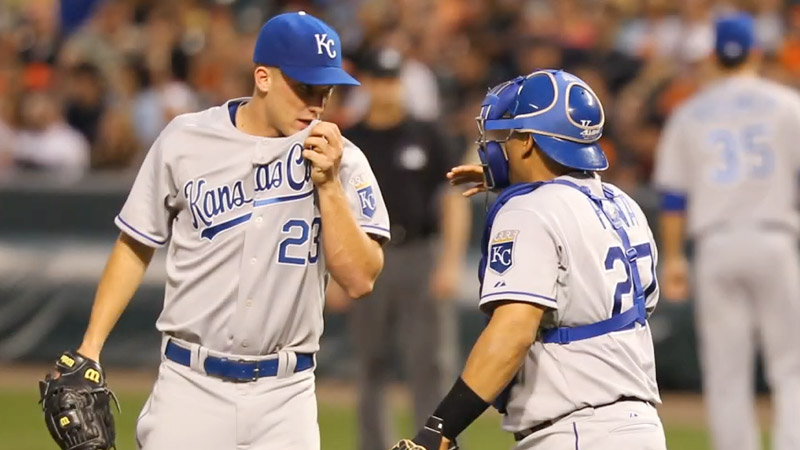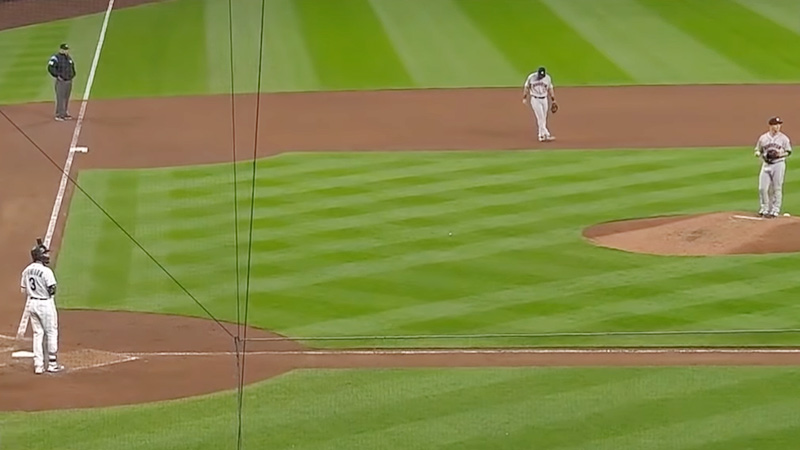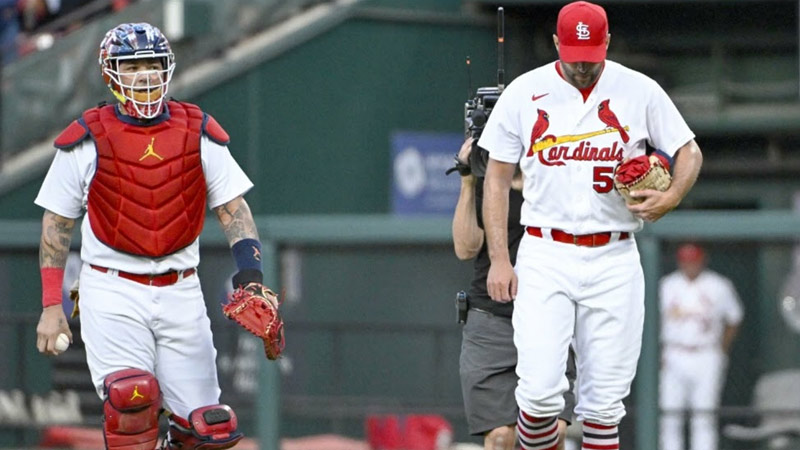Baseball is a game of intricate strategies and collaborative efforts among players. One of the most crucial partnerships on the field is between the pitcher and the catcher, collectively known as the battery.
This article aims to provide an in-depth understanding of what a battery is in baseball and its historical significance.
Also, the responsibilities of the pitcher and catcher within the battery, and how battery success contributes to the overall performance of a team. Keep your thoughts open.
What Is a Battery in Baseball?
In baseball, the term “battery” refers to the dynamic partnership between the pitcher and the catcher. Together, they form a cohesive unit that is responsible for controlling the game, devising strategies, and executing pitches to outsmart the opposing batters.
The pitcher stands on the pitcher’s mound, ready to throw the ball, while the catcher positions themselves behind home plate, prepared to receive the pitch.
The Pitcher in the Battery
The pitcher, often regarded as the leader of the battery, plays a vital role in the team’s defense. They are responsible for delivering the pitch with precision, using a combination of speed, movement, and strategic placement to keep the opposing batters off balance.
The pitcher’s objective is to deceive the batter and induce outs, whether through strikeouts, groundouts, or flyouts. They rely on their repertoire of pitches, including fastballs, curveballs, sliders, change-ups, and more, to keep the batters guessing.
The Catcher in the Battery
The catcher, on the other hand, assumes a multifaceted role within the battery. They act as the anchor behind the plate, receiving the pitcher’s throws and ensuring that they are caught cleanly.
The catcher is responsible for calling the pitches, based on a combination of game situations, the pitcher’s strengths, and the batter’s tendencies. They use a complex system of signs and signals to communicate the desired pitch to the pitcher.
Their defensive skills extend beyond receiving, as they must be proficient in blocking wild pitches, throwing out baserunners attempting to steal, and providing guidance and support to the pitcher throughout the game.
When Was The Term ‘Battery’ First Used?
The term “battery” in baseball originated in the late 19th century and gained prominence in the 1870s. The word “battery” was commonly used to describe a combination of two or more objects or individuals working together, akin to a well-coordinated unit.
In baseball, it found its application in referring specifically to the partnership between the pitcher and the catcher.
Over time, the term became deeply ingrained in the sport’s lexicon, representing the unique collaboration between these two players and their collective impact on the game.
The Significance of the Battery
The battery’s significance in baseball cannot be overstated. It serves as the backbone of a team’s defense, with the pitcher and catcher working in unison to control the game’s tempo, exploit the weaknesses of opposing batters, and keep the score in check.
Their ability to synchronize their efforts, adjust strategies on the fly, and maintain a strong working relationship is vital to the team’s success.
The battery also serves as a cornerstone of leadership on the field, with the pitcher and catcher often assuming pivotal roles in guiding and motivating the other players.
Responsibilities of a Baseball Battery
The battery in baseball consists of two key players: the pitcher and the catcher. Each player has distinct responsibilities that contribute to the success of the battery and the team as a whole.

Let’s delve deeper into the roles of the catcher and the pitcher within the battery.
The Role of a Catcher in Battery
The catcher assumes a pivotal role within the battery and is often regarded as the captain of the defense. Their responsibilities extend beyond merely receiving the pitches. Here are some key aspects of the catcher’s role:
Pitch Calling
One of the catcher’s primary responsibilities is to call pitches. Based on their analysis of the game situation, the batter’s tendencies, and their knowledge of their own pitcher’s repertoire, the catcher strategically selects the type and location of each pitch.
Effective pitch calling can exploit the weaknesses of opposing batters and keep them off balance.
Target Setup
Before each pitch, the catcher sets up a target by positioning their glove in a specific location. The target helps the pitcher aim for a particular spot within the strike zone or even entices the batter to swing at pitches outside the zone.
Precise target setup enables the pitcher to hit their spots consistently and maximize their chances of inducing swings and misses or weak contact.
Receiving Pitches
The catcher must possess exceptional defensive skills to receive the pitches effectively. They need to have soft hands, quick reflexes, and the ability to frame pitches (presenting them in a favorable light to the umpire).
By receiving the pitches cleanly and framing them well, catchers can influence the umpire’s strike zone and potentially secure favorable calls.
Managing the Defense
Catchers are responsible for coordinating the defensive positioning of their teammates. They communicate with infielders and outfielders to ensure everyone is properly aligned to defend against potential plays.
This involves relaying signs and defensive shifts to ensure the entire team is well-prepared for different game scenarios.
The Role of a Pitcher in Battery
The pitcher’s role within the battery is equally crucial. They are the ones delivering the pitches and aiming to deceive the batter and induce outs. Here’s an overview of the responsibilities of the pitcher within the battery:

Execution of Pitches
The pitcher relies on a combination of velocity, control, movement, and strategy to execute pitches effectively.
They must consistently hit their spots within the strike zone, vary pitch speeds, and use different pitch types (e.g., fastball, curveball, changeup) to keep batters off balance.
The pitcher’s ability to execute pitches with precision directly impacts their success on the mound.
Trusting the Catcher
To maintain a harmonious battery, the pitcher must trust the catcher’s pitch calls and target setup. This trust is built through practice, communication, and a shared understanding of the game plan.
The pitcher relies on the catcher’s expertise and analysis to guide their pitch selection and execution. A strong pitcher-catcher bond enhances the battery’s effectiveness.
Strategic Decision-Making
Pitchers must make strategic decisions based on the game situation, the batter’s tendencies, and their strengths.
They need to assess the game’s momentum, adjust their pitch selection accordingly, and adapt to changes in the opposing team’s offensive approach.
Pitchers who can effectively mix pitches, change speeds, and exploit weaknesses in the batter’s swing are more likely to achieve success.
Mental Focus and Composure
Pitching can be mentally demanding, and maintaining focus throughout the game is essential.
Pitchers must block out distractions, remain composed under pressure, and make quick adjustments based on the outcomes of previous pitches.
Mental resilience is vital for overcoming adversity and staying in control of the game.
What Is Battery Success?
Battery success in baseball is not solely measured by individual achievements but rather by the collective performance of the pitcher and catcher as a unit.
A successful battery demonstrates strong communication, synchronization, and an ability to adapt to the game’s dynamics.
They work together to exploit the weaknesses of opposing batters, strategize pitch selection, and maintain control over the game.
FAQs
What skills are essential for a successful battery?
Both the pitcher and catcher require excellent communication, understanding of the game, defensive prowess, and the ability to adjust to different game situations.
How do catchers communicate with pitchers during a game?
Catchers typically use a combination of hand signals, verbal cues, and subtle body language to communicate pitch selection and game strategy to the pitcher.
Can a battery consist of players who don’t speak the same language?
Yes, it is possible for a battery to be successful even if the pitcher and catcher do not speak the same language. Non-verbal communication and pre-established signals can bridge the language barrier.
Are there any famous battery partnerships in baseball history?
Yes, numerous iconic battery partnerships have left a significant mark on the game, such as Sandy Koufax and Johnny Roseboro, Tom Glavine, and Javy Lopez, and Yadier Molina and Adam Wainwright.
Can a strong battery performance compensate for weaknesses in other areas of the team?
While a strong battery performance is crucial, baseball is a team sport, and overall team performance, including offense, defense, and other positions, greatly influences the outcome of a game.
Bottom Line
The battery in baseball represents the symbiotic relationship between the pitcher and catcher, forming the cornerstone of a team’s defense.
Their collaboration, communication, and skillful execution of pitches significantly impact the game’s outcome.
With the roles and responsibilities within the battery and appreciating the historical significance of this unique partnership, one can gain a deeper appreciation for the intricacies of America’s favorite pastime. Good luck.







